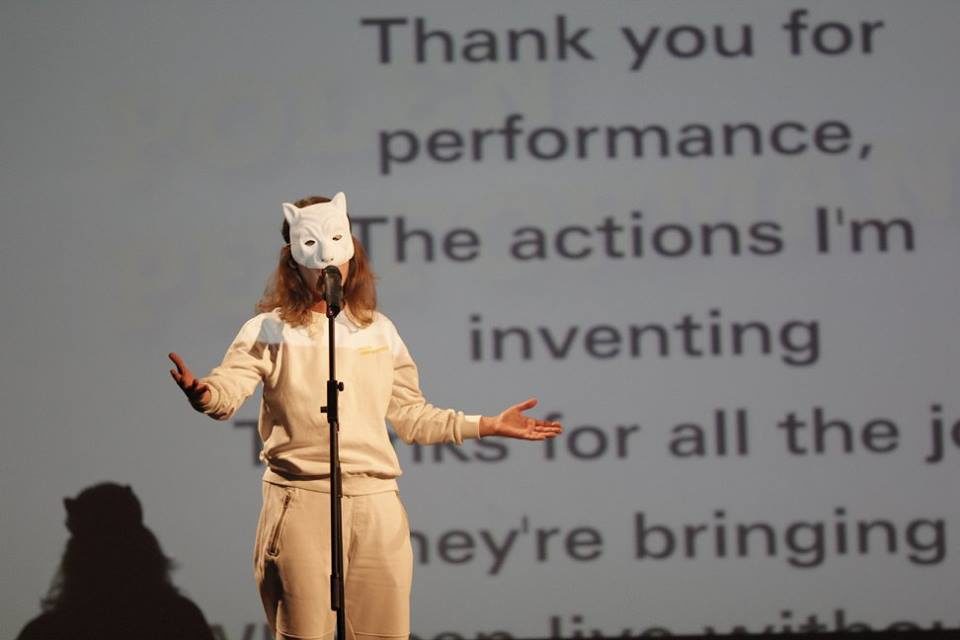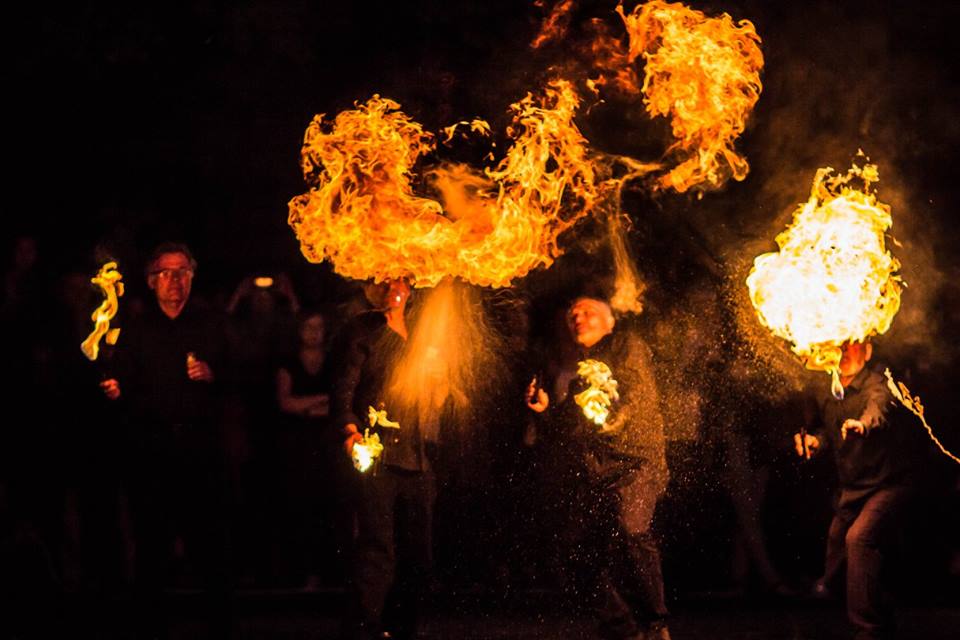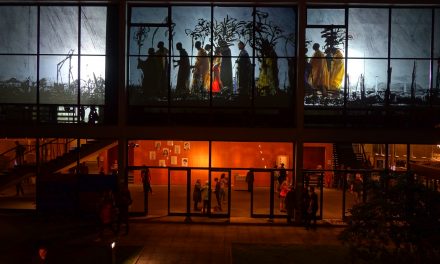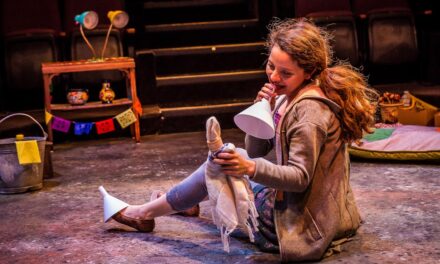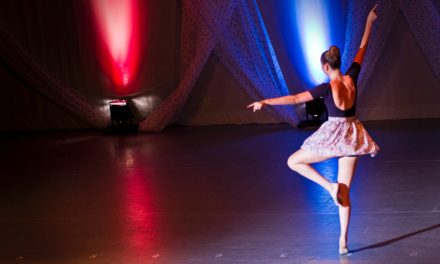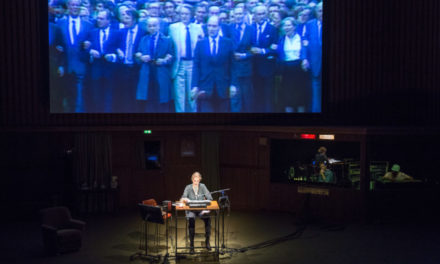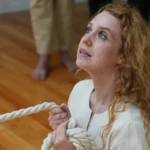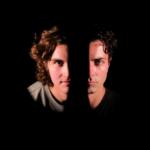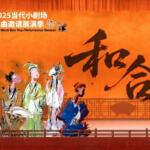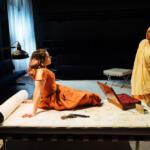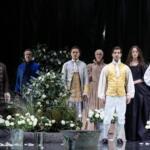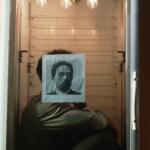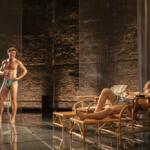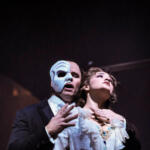Being a festival visitor often leads to an impression of place or events that is slightly unreal. For a few days, one is removed from familiar routines, with the usual world of work and relationships temporarily left behind. Depending on one’s experience, of course, the festival may even seem a little like a fairy tale – especially when secluded in a quiet valley, surrounded by tree covered mountains. All this was certainly true of my few days in the tranquil Polish village of Sokolowsko for this year’s Contexts Festival of Ephemeral Art (2016). Until 1945 this had been a German village called Goerbersdorf, home to renowned sanatoria that provided a model for Davos; but with the post-war border changes, the village was renamed after one of the doctors who had worked there. It was a privilege to be amongst a group of scholars and artists generously invited this year by the Festival curator, Malgorzata Sady, to contribute to events honouring Richard Demarco and his remarkable decades-long commitment to bringing East European art and artists to the Edinburgh Festival. This commitment, despite – or, perhaps, even because of – the Iron Curtain, testifies to Demarco’s profound connection with the sense of the Edinburgh Festival’s founder, Rudolph Bing, of the value of art in facing the often catastrophic failures of politics. (This also grounds the affinity between Demarco and Joseph Beuys, an internationalist partnership of great significance for Scottish arts since the 1970s, which has also been celebrated in various events and exhibitions in Edinburgh this year.)
In the same summer that the UK (although not Scotland, Northern Ireland, or London) voted to end the country’s participation in the EU, it was perhaps all the more important to attest to British-Polish connections made through art – even as these seem as precarious and vulnerable as the proverbial candle flame today. Besides various documentary presentations – and, above all, the irrepressible presence of Demarco himself – the Sokolowsko festival this year hosted a commemorative exhibition, revisiting many of the artists (if not necessarily the actual artworks) of the show of Polish art that was held at the Demarco Gallery in Edinburgh in 1972, “Atelier ’72.” This project – co-curated with Ryszard Stanislawski, the then director of the Muzeum Sztuki in Lodz – brought together an extraordinary gathering of contemporary Polish artists, who have since come to define the art history of that time. Even if the key terms of the exhibition – relating State patronage and avant-garde arts – define it as being of its time, most of the work has indeed outlived the politics (or even, as György Konrad famously suggested, the “antipolitics”) of the period. Nonetheless, how these same relations play out today remains, of course, profoundly contentious.
One of the artists of the 1972 events, Tadeusz Kantor, was represented in the Sokolowsko exhibition not only by the document of his “Dividing Line” Action, but additionally by a newly restored film of the Cricot 2 performance, “The Water Hen”, that visited Edinburgh that year, again through Demarco. Some of the artists present in Edinburgh, however, are still making work and were amongst those participating at this year’s “Ephemeral Art” festival. Koji Kamoji made a performance in the grounds of the old sanatorium, for instance, creating an “ephemeral” thread that linked directly to the past – his own, personally, but also thereby even for those who had perhaps not even been born in 1972. Another of the participants in the Atelier ’72 show, Jozef Robakowski presented a programme of experimental films at the lovely Sokolowosko cinema, which is being restored by the Festival sponsors. (This cinema is itself associated with another great Polish film-maker, Krzysztof Kieslowski, who grew up in the house just over the road from it.) Zbigniew Warpechowski, meanwhile, although no longer making performances, was the centre of attention for many of the young people present at the Festival. Together with Zbigniew Makarewicz, they all joined Demarco – who was in barnstorming form, belying any sense that his 86th birthday was only a few days away – on the stage of the cinema, evoking the value of art to society, whether during the Cold War or now under neo-liberalism.
Amongst the many other artists making the ephemeral memorable at the Festival were Alastair Maclennan, Ewa Benesz, Mariel Carranza, and Akademia Ruchu, whose revisiting of their 1988 street-performance “Poetry” was presented outside in the centre of the village. In addition, there were installations by Mattias Cantzler (with a human-sized mousetrap), a dance of lights (rather than of people) in the sanatorium ruins by Jean-Baptiste Ganne, and an open air, archival repository of “abandoned” objects by Robert Kusmirowski, strangely materialising the “ephemeral” as something that one could collect. This sense of a becoming present of the past – rather the usual becoming past of the present – was echoed by the very setting of Sokolowsko itself, where the once famous sanatoria buildings are now being slowly restored. It is not a question of “recreating” the past here but rather of taking responsibility for it, as part of a care for the present – a care that concerns the paradox of that reciprocal ephemerality and endurance of the imagination that (despite politics) we still value as art.
This article was originally published on https://www.contexts.com.pl. Reposted with permission. Read the original article.
This post was written by the author in their personal capacity.The opinions expressed in this article are the author’s own and do not reflect the view of The Theatre Times, their staff or collaborators.
This post was written by Mischa Twitchin.
The views expressed here belong to the author and do not necessarily reflect our views and opinions.

